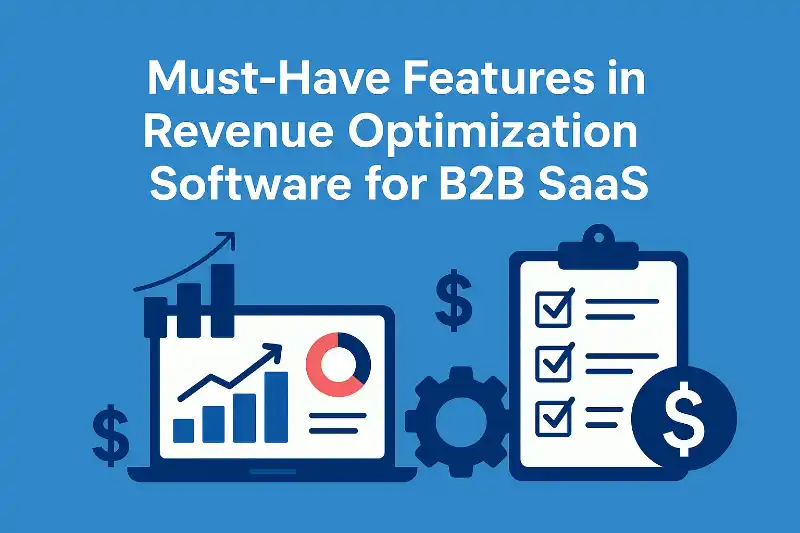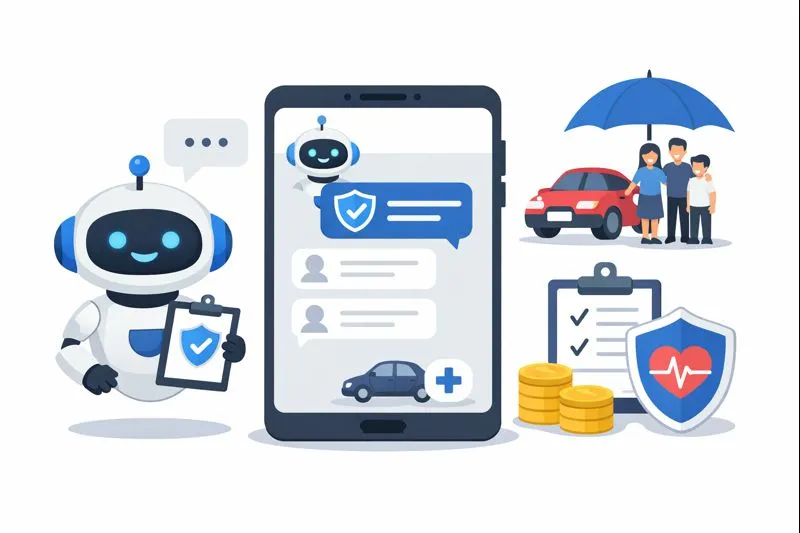Must-Have Features in Revenue Optimization Software for B2B SaaS

As B2B SaaS business owners are aware, there is fierce competition and a rapid shift in requirements. Revenue optimization software can help businesses achieve profitability and long-term growth in this situation.
1. Automated Pricing Intelligence
Effective pricing strategies drive revenue. A revenue optimization software that utilizes historical data and market trends recommends price updates. This keeps the offerings competitive and makes sure of the efficiency of high-profit margins.
2. Real-Time Analytics and Reporting
Access to accurate information empowers decision-makers. Real-time analytics-based solutions enable performance tracking and revenue trends. This allows businesses to respond quickly to shifts in the market.
3. Integration with Existing Tools
When integrated platforms communicate with each other without any hassle, it expedites processes. Seamless integration improves communication between customer relationship management tools and billing systems. Automation also minimizes costly mistakes.
4. Customizable Dashboards
A self-service dashboard delivers the insights into action. You can tailor those views for specific users, displaying only relevant metrics. Various roles from sales to finance are supported by this customization, improving decision-making in the entire organization.
5. Predictive Revenue Forecasting
Earnings projection through advanced tools aids businesses a lot. This helps companies to plan and optimize resource allocation. Realistic forecasts help teams set targets and allocate resources effectively.
6. Churn Analysis and Prevention
For recurring revenue models, long-term clientele is crucial. The software that detects the accounts on hold allows taking the steps before it's too late. By being alert to halted activities ahead of time, you can take actions to boost retention and customer satisfaction.
7. Automated Revenue Recognition
Being compliant with the accounting standards is indeed important for businesses. This reduces the burden of manual bookkeeping, which makes sure all transactions are accurately reflected. This reduces audit risks and upholds financial integrity without requiring laborious manual procedures.
8. Contract Management Features
Efficient contract management can reduce sales cycles. Centralized contract repositories simplify tracking. Businesses can generate recurring revenue without any misses thanks to automated alerts for expirations and renewals.
9. Flexible Billing Options
The best B2B SaaS businesses have all different types of payment arrangements for clients. Software that can support multiple billing models, including subscription, usage-based, or tiered pricing, allows customers to choose their preferred and most convenient billing methods and drive customer satisfaction and loyalty.
10. Comprehensive Security Measures
It is crucial to protect sensitive financial and client data. Robust security features protect data with encryption and permissions controls. Frequent patch updates for security flaws make a system more resistant to attacks and new threats.
11. User Access Controls
Not every employee needs the same access. Administrators can define roles and responsibilities with granular permissions. This method makes it easier to follow company policies while protecting private data.
12.Customer Segmentation Tools
Segmentation is essential; knowing who your customer groups are will help you target strategies. Segmentation features entail dividing customers based on location, industry, or share of the revenue. Because of this, you can have more effective marketing and sales campaigns by customizing your strategy; these are crucial elements.
13. Automated Invoicing and Payment Collection
Timely invoicing improves cash flow. With automated billing, collecting payments becomes seamless and reduces room for human error. By relieving finance teams of manual effort, these features allow them to focus on more strategic activities.
14. Intuitive User Interface
Adoption is more likely when the interface is straightforward. This direct approach, with easy navigation and clear layouts, allows for less training time as well. The software can fulfill its full potential, allowing teams to perform much better.
15. Mobile Accessibility
Remote work is becoming increasingly common. Utilize mobile-friendly platforms to access revenue data and analytics on any device. Regardless of where they work, mobile analytics facilitate quick decisions and teamwork.
16. Scalability for Growth
Many B2B SaaS businesses tend to grow quickly, especially the ones good with technology. Scalable solutions help businesses grow and get more data, like the number of users increased, etc., without compromising performance and stability.
17. Comprehensive Support and Training
Each software offers significant value to its users when accompanied by dependable customer support. Training resources, including tutorials and documentation, facilitate rapid skill acquisition among employees. Responsive support proactively solves problems that affect business operations.
18. Advanced Workflow Automation
Automated workflows increase operational efficiency. The task automation, approval routing, and notification features of the software streamline processes and leave administrative workload behind so you can focus more on high-value projects.
19. Custom Reporting Capabilities
Reporting is an essential component in all organizations; however, each business possesses unique reporting requirements. The primary advantage of custom report builders is their ability to present information in any format and manner desired. Such flexibility is useful to leadership for tracking key performance indicators and identifying things quickly.
Conclusion
When selecting the best revenue optimization software, evaluating key factors is important. By prioritizing these capabilities, B2B SaaS companies can maintain growth and provide predictable value.



